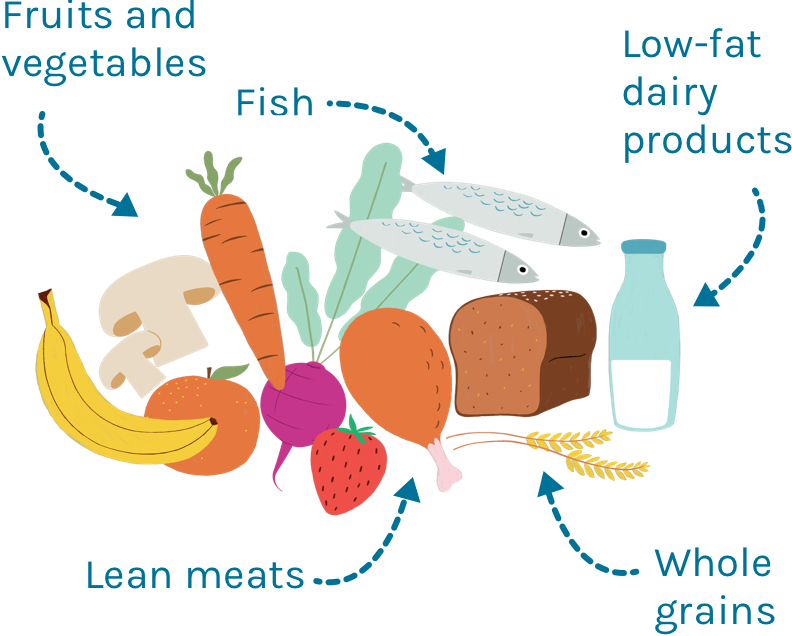
Popcorn is a healthy snack choice for both children and adults. Popcorn is very easy to make at your home. It provides fiber, vitamins, and minerals with the perfect crunch. Try whole grain English muffins instead of refined grains or pre-made dough for pizza. Both are delicious and healthy. You can make your own recipe depending on which variety you choose.
The nutrition label is a key indicator of the nutritional value of a snack. Healthy snacks will have less sugar and more protein. There are low-sodium options for many popular snacks. It is important to pay attention to serving size. The smaller the serving size, the better. Look for ones with more fiber and fat. Whole-grain crackers, high in fiber, are another good choice. You can make healthy snack cakes at home.

Offer a fruit smoothie or vegetable smoothie during the afternoon. You can help your child avoid overeating and binging by giving them a few small bites of fresh fruit and vegetables. Offering fruits and vegetables can be combined with protein-rich food like ramen noodles to help your child feel satisfied. Healthy snacks for children include frozen fruit bars and low fat pudding. Another healthy snack option is yogurt made with milk or plain yogurt and fresh or frozen fruit.
Think about how healthy the snack is for your health and the environment. Choose snacks with a high-fiber content that contain only 100 calories per serving. High-fiber snacks can help you to eat less and be more satisfied with your next meal. Snacks containing less than 10 grams of sugar are a sweet and easy option for people on a tight schedule. Plan ahead when planning a party to make sure you have a snack that is healthy, tasty, and easy to carry.
Snacks are an important part of any celebration. They should contain protein, fat, as well as vegetables. These are all excellent options for snacks. Nuts, almond butter and avocado cubes are great healthy snack options for kids. You can also give your child roasted chickpeas and a hard-boiled eggs if you don't like raw foods. Both of these great snacks are healthy.

A healthy snack can be made from foods your children can make. There are also cheesy patties which incorporate shredded carrots to create a savory snack. These are also great for people with sweet tooth. Healthy snacks can be both a way to get in vegetables and a treat for kids. If you're looking for more protein and fiber, you could even make your own peanut butter.
Granola bars, which are high in protein and fiber, can be made at your home for as low as $1 per bar. A multi-seed cracker can be made at home with a high-quality recipe and can last for up to a week. If you're looking for a healthy snack that won't make you gain weight, try one of these healthy snacks! Then, you'll never look back!
FAQ
What can be done to increase your immune system's effectiveness?
The human body consists of trillions of cells. These cells combine to form organs or tissues that serve specific functions. If one cell dies, a new cell takes its place. Cells communicate with one another using chemical signals called hormonal hormones. Hormones regulate all bodily functions from growth and developmental to metabolism and immunity.
Hormones refer to chemicals produced throughout the body by glands. They are chemicals that travel through the bloodstream and function as messengers to control how our bodies work. Some hormones are produced within the body while others are externally manufactured.
The release of hormones from a hormone producing gland into the bloodstream is the beginning of hormone production. Once released, hormones move through the body until they reach their target organ. In some cases hormones can remain active for only a few hours. Some hormones remain active for longer periods of time and can continue to have an impact on the body's function long after they are gone.
Some hormones are made in large quantities. Others are made in small quantities.
Certain hormones can only be produced at specific times in life. For instance, estrogen is produced during puberty, pregnancy, menopause, and old age. Women can get estrogen to build breasts, prevent osteoporosis, and keep their bones healthy. It helps to stimulate hair growth and maintains skin's softness.
What's the difference between a virus & a bacterium?
A virus can be described as a microscopic organism that cannot reproduce in another cell. A bacterium is a single-celled organism that reproduces by splitting itself in two. Viruses measure only 20 nanometers in diameter, but bacteria is up to 1 millimeter in size.
Viruses are spread via contact with infected bodily liquids such as urine, saliva, semen and vaginal secretions. Bacteria are often spread via direct contact with contaminated surfaces or objects.
Viruses may enter the body through cuts, scrapes. bites, or any other break in the skin. They can also be transmitted through the eyes, nose, mouth, ears, rectum, and anus.
Bacteria may enter our bodies through cuts and scrapes on our skin, burns, insect bites, and other wounds. They can also be introduced to our bodies by food, water and soil.
Both bacteria as well as viruses can cause illness. But viruses can't multiply within their hosts. They infect only living cells, causing illness.
Bacteria can multiply within their hosts and cause illness. They can spread to other parts of our bodies. Antibiotics are needed to eliminate them.
How to measure your body fat
The best way to measure body fat is with a Body Fat Analyzer. These devices are used for measuring the percentage of body fat in people who want to lose weight.
Statistics
- According to the Physical Activity Guidelines for Americans, we should strive for at least 150 minutes of moderate intensity activity each week (54Trusted Source Smoking, harmful use of drugs, and alcohol abuse can all seriously negatively affect your health. (healthline.com)
- Extra virgin olive oil may benefit heart health, as people who consume it have a lower risk for dying from heart attacks and strokes according to some evidence (57Trusted Source (healthline.com)
- nutrients.[17]X Research sourceWhole grains to try include: 100% whole wheat pasta and bread, brown rice, whole grain oats, farro, millet, quinoa, and barley. (wikihow.com)
- In both adults and children, the intake of free sugars should be reduced to less than 10% of total energy intake. (who.int)
External Links
How To
What does "vitamin" actually mean?
Vitamins are organic substances found naturally in food. Vitamins help us absorb nutrients from foods we eat. The body cannot make vitamins; therefore, they must be obtained from food.
There are two types: water-soluble and fat-soluble vitamins. Water-soluble vitamins dissolve readily in water. You can find vitamin C,B1 or thiamine, B2 or riboflavin and B3 or niacin, B3/niacin, B6/pyridoxine, folic Acid, biotin and pantothenic Acid as examples. The liver and fatty tissues are home to fat-soluble vitamins. You can find vitamin D, E K, A, beta carotene, and other fat-soluble vitamins.
Vitamins can be classified by their biological activity. There are eight main groups of vitamins.
-
A - vital for healthy growth.
-
C - important for proper nerve function and energy production.
-
D - Essential for healthy teeth and bones.
-
E is required for good vision and reproduction.
-
K – Required for healthy nerves & muscles.
-
P - vital for building strong bones andteeth.
-
Q - aids digestion and absorption of iron.
-
R is required for the production of red blood cells.
The recommended daily allowance of vitamins (RDA), varies according to age, gender, physical condition, and other factors. RDA values are set by the U.S. Food and Drug Administration (FDA).
For adults over 19, the RDA for vitaminA is 400 micrograms per daily. However, pregnant women need 600 micrograms per day because it is important for fetal development. Children ages 1-8 require 900 micrograms per day. Children under 1 year old require 700 micrograms daily, while infants over one year old need 500 micrograms every day. This decreases between 9 and 12 months.
Children aged between 1-18 years require 800 micrograms of sugar per day, while overweight children need 1000 micrograms. Children who are underweight receive 1200 micrograms every day to meet their nutritional requirements.
Children aged 4-8 years old who have been diagnosed as having anemia require 2200 micrograms of vitamin C per day.
2000 micrograms per person is necessary for general health. Breastfeeding or pregnant women require 3000 micrograms per daily due to higher nutrient demands.
1500 micrograms are required daily by adults over 70 because they lose approximately 10% of their muscle each decade.
Women who are pregnant or lactating need more than the RDA. Pregnant woman need 4000 micrograms daily in pregnancy, and 2500 per day after childbirth. Breastfeeding moms need 5000 micrograms each day when breastmilk production occurs.